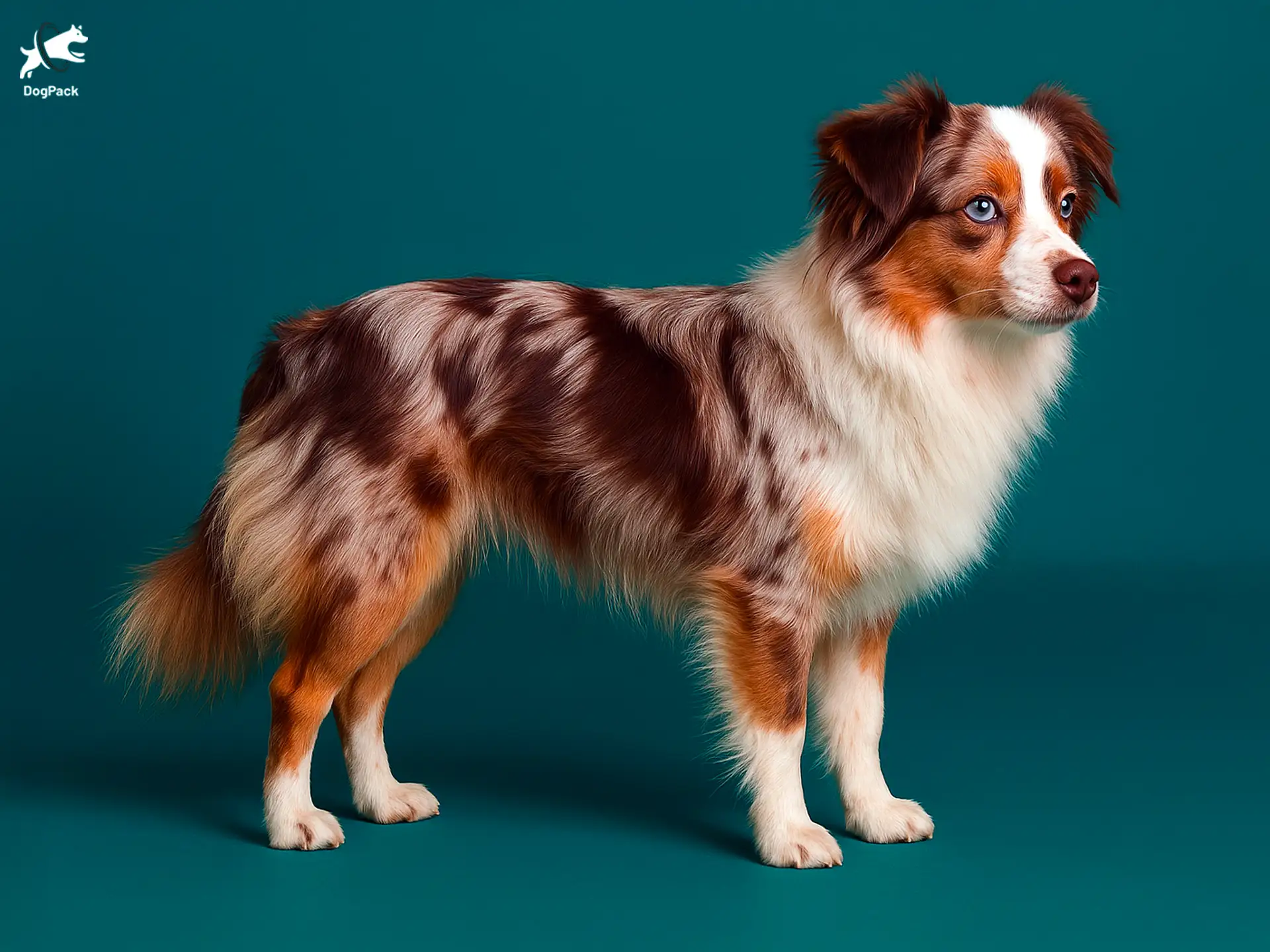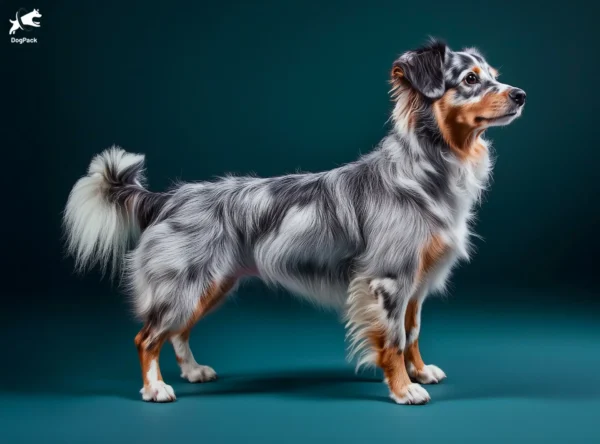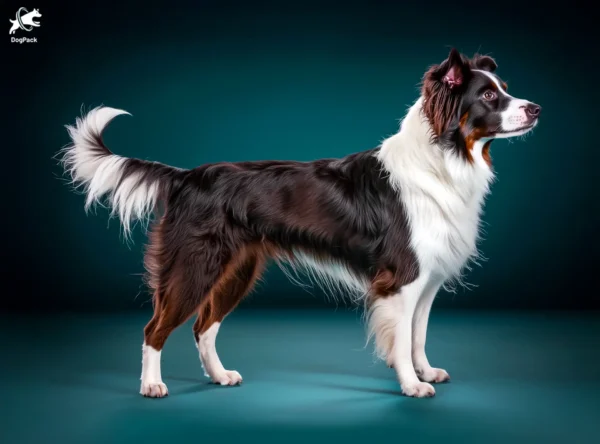Toy Australian Shepherd Dog Breed Info & Overview
The Toy Australian Shepherd is a pint-sized version of the beloved Aussie, offering big personality in a smaller package. Friendly, active, and bright, these little canines often charm owners with their energetic spirit and keen intelligence. They’re a wonderful fit for dog lovers seeking an outgoing companion that still carries the hallmark traits of a herding breed.
Characteristics
Pictures
Breed History
The early history of these tiny Aussies traces back to the ranches of the western United States, where smaller Australian Shepherds were occasionally bred for more compact companions. Enthusiasts loved how these dogs retained the sharp herding instincts and striking looks of standard Aussies, yet were easier to handle in tight living spaces. Over time, fans began calling them “toy” varieties, despite a lack of official recognition.
Though the Toy Australian Shepherd shares roots with larger Aussies, they never achieved the same widespread breeding programs or kennel club acceptance. Still, these compact pups grew in popularity among owners who valued their agile bodies and loyalty. Small-scale breeders worked to standardize their traits, aiming to preserve the quintessential Aussie personality in a tinier form.
Today, many enthusiasts consider them a distinct size variation of the Australian Shepherd rather than a separate breed. No major organizations officially recognize them, but that hasn’t stopped fans from celebrating these petite dynamos at dog shows, local meetups, and online communities. Whether herding miniature flocks or simply patrolling a suburban yard, they carry on a proud legacy of Aussie versatility.
Temperament, Personality
Friendly and eager to connect, these diminutive herders thrive on human interaction. Most adore play sessions and mental stimulation, making puzzle toys and hide-and-seek favorite pastimes. They often form close bonds, preferring to stay near their chosen people. Despite their small size, they can be surprisingly protective, issuing sharp barks to alert you of visitors or unusual noises.
Kids typically love these pups, as they match an energetic child’s enthusiasm for games of chase or fetch. Proper socialization helps the Toy Australian Shepherd feel confident around new people and other animals, minimizing shyness or possessive behavior. Given their keen intelligence, they quickly pick up on household routines, and many owners joke these dogs can anticipate your next move!
Early exposure to different environments ensures they remain well-adjusted adults. They may be aloof with strangers at first but warm up fast once they sense kindness. When treated kindly, these smart canines repay you tenfold in affection. Above all, they’re playful companions who thrive on an active lifestyle, making them ideal for owners who appreciate a dog that stays engaged throughout the day.
Physical Characteristics
Picture a standard Australian Shepherd shrunk down to a more portable size, and you’ll have a good idea of these dogs’ overall appearance. They sport the same merle, black, red, or tricolor coats, featuring bold or subtle markings. Their almond-shaped eyes might be brown, blue, or a combination, giving them a mischievous spark many owners find irresistible.
A compact, well-proportioned body allows them to move with agility, reminiscent of their full-sized herding relatives. They have moderately feathered ears and a dense double coat that provides protection against various weather conditions. Though petite, a Toy Australian Shepherd typically displays confident posture, hinting at its original purpose as a working dog.
Most stand between 10 and 14 inches tall, carrying lean muscle mass that supports their energetic escapades. Their bushy tails—sometimes docked, sometimes natural—add to the breed’s cheerful presence. Despite weighing as little as 10 pounds, they rarely seem fragile, instead conveying the robust spirit Aussies are known for. It’s this balance of small size and sturdy athleticism that captivates so many fans.
Health Issues
Like many smaller canines, these little Aussies can be prone to patellar luxation, a condition involving knee instability. Regular checkups with a trusted vet can catch early signs and help you manage the issue before it worsens. Another concern is eye health, particularly if the dog carries the merle gene, so routine vision screenings are essential.
Hip dysplasia is less common than in larger breeds but still possible, so maintaining a healthy weight through proper nutrition and exercise can minimize joint stress. The Toy Australian Shepherd may also face dental crowding due to its small jaw, making consistent oral care essential. Frequent brushing and occasional dental cleanings help keep gum disease at bay.
Preventive care, such as balanced diets, vaccinations, and parasite control, goes a long way toward safeguarding their well-being. Monitoring for any signs of allergies is wise, as smaller dogs might develop sensitivities to certain foods or environmental factors. Ultimately, partnering with a veterinarian who understands the breed’s specific needs is the best route to ensure a long, vibrant life.
Grooming Needs
Though they’re small, their double coats require regular attention. A weekly brushing session often suffices to remove loose fur and prevent tangles. During shedding seasons—typically spring and fall—more frequent brushing helps keep stray hair under control and reduces matting. If you’re prepared to invest a bit of grooming time, you’ll be rewarded with a silky, healthy coat.
Bathing every four to six weeks typically works well for most Toy Aussies, as excessive bathing can strip natural oils and irritate their skin. Pay close attention to the undercoat around the hindquarters and behind the ears, where mats commonly form. The Toy Australian Shepherd may also benefit from a trim of these areas if you notice persistent tangling.
Don’t neglect nail maintenance—trim them when you hear clicking against the floor. Periodic ear cleaning prevents wax buildup, especially since their ears can trap moisture. Finally, dental care is crucial due to their small mouths, so daily brushing or dental chews can help fend off plaque. When done consistently, these grooming steps keep your little Aussie both comfortable and looking its best.
Exercise Requirements
Despite their size, Toy Aussies have moderate-to-high energy levels. Short walks around the neighborhood won’t fully satisfy them every day, so mix in more stimulating activities like fetch, agility drills, or even playful herding games in a secure yard. If you don’t provide outlets for their energy, they might resort to mischief, such as chewing or persistent barking.
Aim for about an hour of vigorous exercise daily, split into multiple sessions to fit your schedule. Mental stimulation is just as crucial: puzzle feeders or treat-dispensing toys help keep them entertained. The Toy Australian Shepherd often shows remarkable stamina, especially if you build a routine that includes both physical and mental tasks.
Variety is key to keeping them motivated. Alternate walks with indoor obstacle courses or dog park visits where they can socialize. If your living space is on the smaller side, consider turning hallway corners or a backyard patch into a mini agility track. As long as they’re engaged and moving, these pups will remain happy and well-adjusted.
Training Tips
Smart and eager-to-please, these little herders respond well to positive reinforcement. Reward-based methods, like treats or praise, encourage them to repeat good behaviors. Start early to establish boundaries, focusing on consistent cues for basic commands. This helps them build confidence and prevents the “small dog syndrome” sometimes seen when tiny canines rule the roost.
Many owners find that short, fun sessions suit the Toy Australian Shepherd best, as lengthy drills might tire their attention span. Mixing up tasks—like adding new commands or mini agility routines—keeps their sharp minds engaged. If they show signs of stubbornness, remain calm and patient. Harsh correction can make them anxious, so strive for a gentle, encouraging approach.
Socialization is equally critical. Expose them to various sights, sounds, and people from puppyhood on. Puppy classes or doggy meetups help them learn polite behaviors while honing their communication skills with other animals. Above all, training should nurture a trusting relationship. With the right blend of structure and praise, you’ll see their natural cleverness shine through.
Nutrition, Diet
Because of their active nature, Toy Aussies need a balanced diet that supports energy levels without causing weight gain. Opt for a high-protein dog food formulated for small breeds, focusing on real meat sources like chicken or salmon. Look for formulas that include antioxidants and omega-3 fatty acids, which may support a healthy coat and optimal brain function.
Portion control is crucial, as overfeeding can lead to obesity, which strains their joints and overall health. An average Toy Australian Shepherd might consume around ¾ to 1¼ cups of premium small-breed kibble per day, split into two meals. Always consult your veterinarian for personalized guidance based on your dog’s age, activity level, and specific dietary needs.
Some owners incorporate high-quality wet food or homemade meals to keep mealtime exciting. If you go that route, balance essential nutrients carefully. Limit treats to about 10% of daily caloric intake to maintain a trim figure. Look out for signs of food sensitivities—like skin irritation or digestive upset—and switch to hypoallergenic or limited-ingredient diets if recommended by a vet.
Adoption, Breeders
Locating a healthy Toy Aussie often starts with searching for reputable breeders who conduct health screenings on their breeding pairs. Responsible breeders will happily answer questions about lineage, offer health guarantees, and let you meet the pup’s parents. You might also find rescue organizations dedicated to smaller herding dogs, giving these adorable canines a second chance at a loving home.
Look for established groups like MASCUSA (Miniature American Shepherd Club of the USA), which sometimes shares resources on toy-size Aussies, or explore the Good Dog website for verified breeders. Steer clear of puppy mills and backyard operations—low prices may signal unregulated conditions and higher risk of inherited health problems.
If you’re adopting, ask about each dog’s background, personality, and medical history. Some rescues provide transitional training and housebreaking assistance, helping you acclimate a new pet smoothly. Whether you purchase from a licensed breeder or adopt from a shelter, always confirm you’re working with an organization that prioritizes the well-being of this lovable breed.
Family Pet?
Families with older kids often find these pups an excellent fit, as energetic youngsters can match the dog’s lively demeanor. Younger children can enjoy them too, but supervision is wise—small dogs may become overwhelmed by rowdy play. In households that dedicate time to training, they thrive, forging deep bonds and readily joining in on family adventures.
Toy Aussies are known to coexist well with other dogs, especially if they’re introduced early and socialized. They may even befriend confident cats, though some herding instincts might kick in, leading to gentle “nudging.” The Toy Australian Shepherd can adapt to a variety of home environments, as long as they receive enough mental and physical stimulation.
Since they crave companionship, leaving them alone for extended periods can lead to anxiety-based behaviors. However, in a bustling family setting, they enjoy being the center of attention. Whether curled up on the couch or tagging along on a weekend hike, this breed appreciates inclusion. Overall, their loyal, affectionate nature typically makes them a beloved member of the household.
Right For You?
If you’re searching for a small dog with a big dog’s personality and stamina, a Toy Aussie might be calling your name. They do best with owners who embrace an active lifestyle and can commit to regular exercise. Think you’ll have time for daily training sessions and mental stimulation? If yes, then you’ll likely enjoy life with a quirky little herder at your side.
On the flip side, if you want a couch potato that’s content to lounge all day, this breed’s high drive may overwhelm you. They also require consistent grooming, so consider that in your schedule. The Toy Australian Shepherd can be an incredible companion if you appreciate a dog that’s bright, engaged, and eager for adventure—just be sure you’re ready to match their vibrant pace!
Ultimately, deciding whether this breed fits your world depends on your daily routine, physical activity preferences, and patience for training. If you’re up for the challenge, expect unwavering loyalty and a playful spirit that seldom fades. From hiking trails to weekend barbecues, this little herder will stick right by your side, ready for anything life throws its way.
Conclusion
Although not recognized by major kennel clubs, these miniature herders bring the heart and soul of a full-sized Aussie into homes that desire a smaller companion. Their intelligence, energy, and eagerness to please make them lovable sidekicks for those able to meet their activity needs. If a vibrant, loyal friend with a healthy dash of herding charm is what you seek, a Toy Australian Shepherd could be a perfect fit.
FAQs
-
How does the Toy Australian Shepherd compare to the Miniature and Standard Australian Shepherd?
The Toy Australian Shepherd is the smallest version, typically standing 10–14 inches tall and weighing 7–20 pounds. It retains the intelligence, agility, and herding instincts of the Miniature (14–18 inches) and Standard (18–23 inches) versions but is more adaptable to small-space living.
-
Can a Toy Australian Shepherd be trained for agility or herding despite its small size?
Yes! Despite their size, Toy Australian Shepherds excel in agility, obedience, and even small-scale herding tasks. They have strong working instincts, so structured training, agility courses, and mental challenges help keep them engaged.
-
Are Toy Australian Shepherds prone to separation anxiety?
Yes, Toy Australian Shepherds form strong bonds with their owners and may develop separation anxiety if left alone for long periods. They thrive in interactive households where they receive consistent companionship, training, and stimulation.
-
How does coat color affect the health of a Toy Australian Shepherd?
Toy Aussies come in various colors, but merle-to-merle breeding can result in deafness or vision impairments. Responsible breeding ensures puppies are not at risk for genetic disorders related to coat color inheritance.
-
Do Toy Australian Shepherds have the same energy levels as larger Australian Shepherds?
While slightly less demanding, Toy Australian Shepherds still have high energy needs and require daily exercise, training, and interactive play. They may adapt better to apartments than larger Aussies, but they are not lap dogs and still need an active lifestyle.
Breed Ratings
The Toy Australian Shepherd is famously bright and quickly learns commands and routines.
They love toys, games, and interactive fun but also appreciate calm moments with their family.
Though small, they have a surprising amount of stamina and need daily exercise to stay happy.
Expect moderate shedding, especially during seasonal coat changes in spring and fall.
They may chase smaller critters, though consistent training can help redirect this tendency.
Regular brushing is essential, but most owners find it manageable for a double-coated breed.
Eager to please and intelligent, they excel in obedience and trick training with positive methods.
They can develop separation anxiety if left alone for long stretches without mental stimulation.
They can be vocal watchdogs, but proper training helps curb excessive barking.
Drool is minimal, making them relatively tidy around the house.
Often social with other dogs, especially if well-socialized from an early age.
Generally robust, but watch for joint or eye issues and maintain routine vet care.













